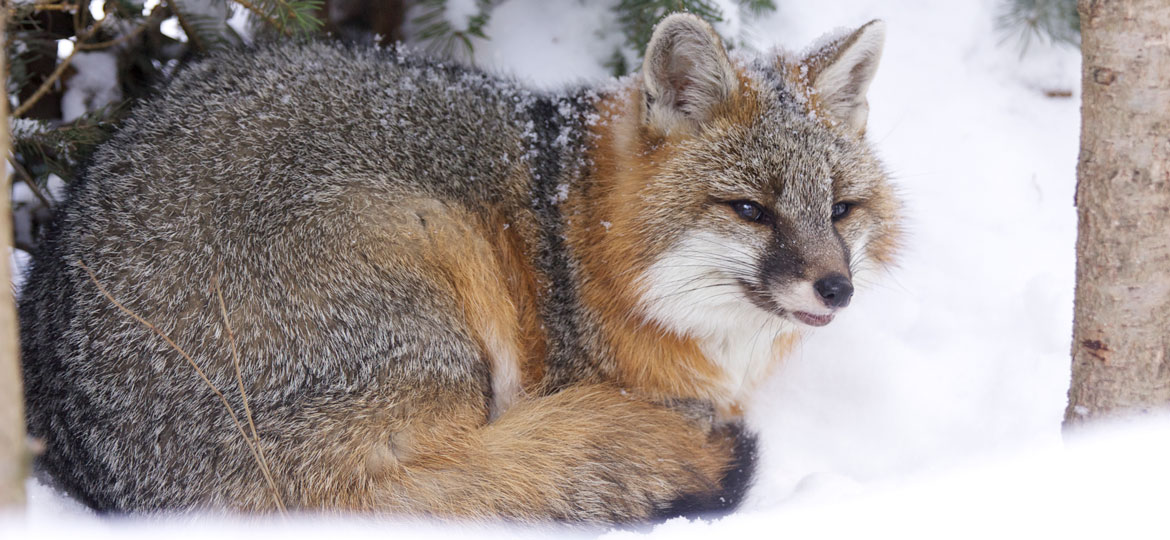
The gray fox (Urocyon cinereoargenteus ) is a native to Vermont and can be found throughout most of the United States. Slightly smaller than its cousin, the red fox, it prefers wooded habitat. It is also known as the flying fox or tree fox because unlike most canids the gray fox has semi-retractable claws, which enable it to climb.
Habitat
The gray fox prefers dense hardwood or mixed hardwood/softwood forests. Gray fox habitat is commonly located along the banks of streams and rivers. It also prefers overgrown fields for foraging.
The gray fox requires den sites, which may be a hollow log or tree, rock crevice, piles of wood or a brush pile. It often lines the den with shredded bark or leaves and will return to the same one year after year.
The gray fox is nocturnal and crepuscular, which means it is most active at dusk and dawn. During the day, it remains in the den. The gray fox is extremely territorial of its small (often only one square mile) home range.
This fox is unlike any other canid in its ability to climb trees. It will climb trees to escape ground predators, to pursue tree dwelling animals, or to attack ground prey from above. The gray fox can climb up a tree by grasping the trunk with its forepaws and forcing itself up higher by the strength of the claws on its back feet. To descend, it can scramble down head or feet first by jumping from branch to branch.
Reproduction
The gray fox breeds and raises one litter annually, beginning the first year of its life. The breeding season for the gray fox ranges from February to March. During this time, it is not uncommon for males to fight aggressively in competition for females.
After mating, a male will stay with a female to provide her with food during denning and to assist in caring of the young. After a gestation period of 53 days, young are born in a litter ranging in size from one to seven pups.
The dark brown pups are born blind and are dependent on their parents for survival. They are weaned, or stop suckling, at about six weeks of age. Gradually they learn how to fend for themselves.
At three months, the pups leave the den with their parents and learn to hunt. By four months of age the pups are able to forage on their own. The young remain with the parents until fall, at which time they reach sexual maturity and disperse.
Diet
The gray fox is an omnivore, eating a wide variety of plants and animals. Common prey includes rabbits, rodents, birds, crickets, grasshoppers, squirrels, opossum and fresh carrion (dead animals). The gray fox also supplements its diet with apples, grapes, corn and other plants that are seasonally available and abundant.
Management
There is no active management plan designed for the gray fox, but continued monitoring is conducted to ensure that their population remains healthy and abundant. They are protected from hunting and trapping during the breeding and pup-rearing season, as the hunting season in Vermont is from October to early February.
There are a number of canine diseases and parasitic infections, such as heartworm and distemper that can occur in a population that has grown too large. The harvesting of gray foxes then is not only beneficial to humans, but to the overall fox population as well.
Status
Gray foxes can be found throughout Vermont but are more common in areas where preferred habitat is abundant. They can be found in higher densities at lower elevations and in the southern two-thirds of the state.
